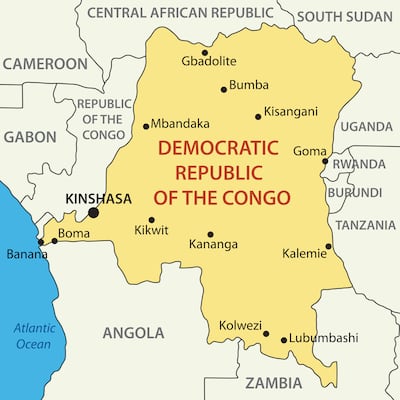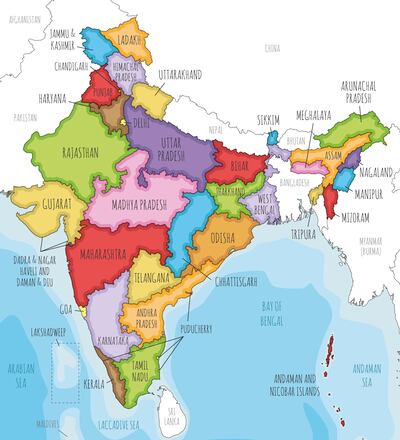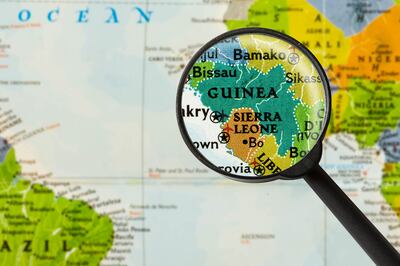When Ebola swept through eastern Democratic Republic of Congo in 2018, it was a struggle to track cases. Dr Billy Yumaine, a public health official, recalls steady flows of people moving back and forth across the border with Uganda while others hid sick family members in their homes because they feared the authorities. It took at least a week to get test results, and health officials had difficulty isolating sick people while they waited.
It took two years for the country to bring that outbreak under control, and more than 2,300 people died.
A similar disaster threatened DRC in September 2021. Members of a family in North Kivu province fell ill with fevers, vomiting and diarrhoea, one after the other. Then their neighbours became sick, too.

But that set off a series of steps that DRC put in place after the 2018 outbreak. The patients were tested, the cases were quickly confirmed as a new outbreak of Ebola and, right away, health workers traced 50 contacts of the families. Then they fanned out to test possible patients at health centres and screened people at the busy border posts, stopping anyone with symptoms of the haemorrhagic fever. Local labs that had been set up in the wake of the previous outbreak tested more than 1,800 blood samples.
READ MORE
It made a difference: This time, Ebola claimed just 11 lives.
“Those people died, but we kept it to 11 deaths, where in the past we lost thousands,” Dr Yumaine said.
While it may not feel that way, we have learned a thing or two about how to do this, and sometimes we get it right
You probably didn’t hear that story. You probably didn’t hear about the outbreak of deadly Nipah virus that a doctor and her colleagues stopped in southern India last year, either.
Or the rabies outbreak that threatened to race through nomadic Masai communities in Tanzania. Quick-thinking public health officials brought it in check after a handful of children died.
Snuffed out
Over the past couple of years, the headlines and the social feeds have been dominated by outbreaks around the world. There was Covid, of course, but also mpox (formerly known as monkeypox), cholera and resurgent polio and measles. But a dozen more outbreaks flickered, threatened – and then were snuffed out. While it may not feel that way, we have learned a thing or two about how to do this, and sometimes we get it right.
A report by global health strategy organisation Resolve to Save Lives documented six disasters that weren’t. All emerged in developing countries, including those that, like DRC, have some of the most fragile health systems in the world.
While cutting-edge vaccine technology and genomic sequencing have received lots of attention in the Covid years, the interventions that helped prevent these six pandemics were steadfastly unglamorous: building the trust of communities in the local health system. Training local workers in how to report a suspected problem effectively. Making funds available to dispense swiftly, to deploy contact tracers or vaccinate a village against rabies. Increasing lab capacity in areas far from urban centres. Priming everyone to move fast at the first sign of potential calamity.
“Outbreaks don’t occur because of a single failure; they occur because of a series of failures,” said Dr Tom Frieden, CEO of Resolve. “And the epidemics that don’t happen don’t happen because there are a series of barriers that will prevent them from happening.”
Dr Yumaine said a key step in shutting down Congo’s Ebola outbreak in 2021 was having health officials in each community trained in the response. The Kivu region has lived through decades of armed conflict and insecurity, and its population faces a near-constant threat of displacement. In previous public health emergencies, when people were told they would have to isolate because of Ebola exposure, they feared it was a trick to move them off their land.
“In the past, it was always people from Kinshasa who were coming with these messages,” he said, referring to the country’s capital. But this time, the instructions about lockdowns and isolation came from trusted sources, so people were more willing to listen and be tested. “We could give local control to local people because they were trained.”
Because labs had been set up in the region, people with suspected Ebola could be tested in a day or two, instead of waiting a week or more for samples to be sent more than 1,600 miles to Kinshasa.
In the state of Kerala in southern India, Dr Chandni Sajeevan, the head of emergency medicine at Kozhikode Government Medical College hospital, led the response to an outbreak of Nipah, a virus carried by fruit bats, in 2018. Seventeen of the 18 people infected died, including a young trainee nurse who cared for the first victims.
‘Very frightening’
“It was something very frightening,” Chandni said. The hospital staff got a crash course in intensive infection control, dressing up in the “moon suits” that seemed so foreign in the pre-Covid era. Nurses were distraught over the loss of their colleague.
Three years later, in 2021, Chandni and her team were relieved when the bat breeding season passed with no infections. And then, in May, deep into India’s terrible Covid wave, a 12-year-old boy with a high fever was brought to a clinic by his parents. That clinic was full, so he was sent to the next, and then to a third, where he tested negative for Covid. But an alert clinician noticed that the child had developed encephalitis. He sent a sample to the national virology lab. It swiftly confirmed that this was a new case of Nipah virus.

By then, the child could have exposed several hundred people, including dozens of health workers.
The system Dr Chandni and her colleagues had put in place after the 2018 outbreak kicked into gear: isolation centres, moon suits, testing anyone with a fever for Nipah as well as Covid. She held daily news briefings to quell rumours and keep the public on the lookout for people who might be ill – and away from bats and their droppings, which litter coconut groves where children play. Teams were sent out to catch bats for surveillance. Everyone who had been exposed to the sick boy was put into 21 days of quarantine.
‘Covid broke a lot of things. It broke healthcare worker resilience, it broke the willingness of many people to follow public health advice’
— Amanda McLelland of global health strategy organisation Resolve to Save Lives
“Everyone, ambulance drivers, elevator operators, security guards – this time, they knew about Nipah and how to behave not to spread it,” she said.
Amanda McLelland, who leads epidemic prevention at Resolve, said when she heard of new Ebola cases in Guinea in West Africa in 2021, she feared disaster. An outbreak that began in Guinea in 2014 had spread to two neighbouring countries, and by the time it was declared over, two years later, nearly 30,000 people had been infected and 11,325 had died.

But this time, although Guinea was already struggling to respond to Covid, it managed to bring the Ebola outbreak in check in six months, with 11 deaths. “That was a fantastic example of learning those lessons and investing and building sustainably in the capacity,” McLelland said.
While public health failures such as those in the face of Covid receive plenty of attention, she said, “our success is invisible”.
Fitful progress
Nevertheless, progress can be fitful: a new Ebola outbreak is slowly being brought under control in Uganda, and neighbouring nations have watched it with concern. “I think what we’re seeing there is the unfortunate harvest of Covid. Covid broke a lot of things. It broke healthcare worker resilience, it broke the willingness of many people to follow public health advice, it broke trust in the healthcare system and communities that was there before. Progress is possible, but it’s also fragile.”
But Dr Yumaine said he had growing confidence that even if Ebola were to spill back across the border from Uganda, Congo could respond swiftly, with surveillance systems that grow better all the time.
“We’re encouraged by our improvements,” he said. “But we’re not stopping there.” – This article originally appeared in the New York Times.













